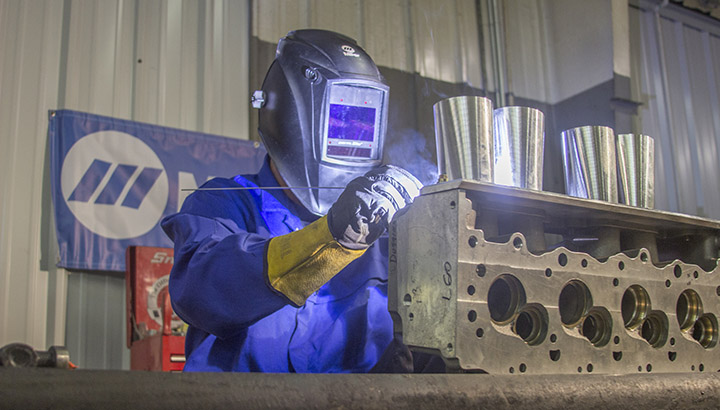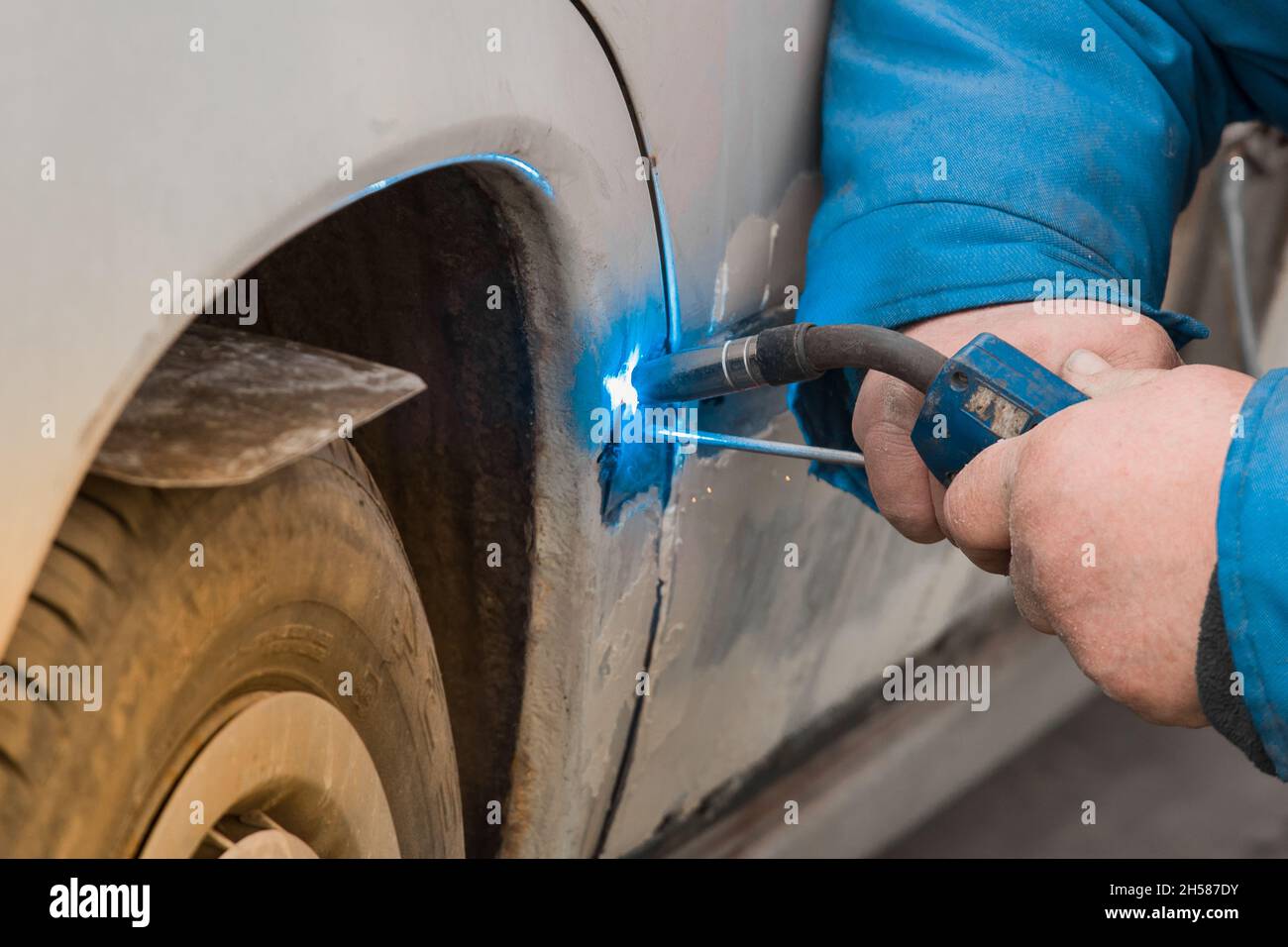Technical breakdown at welding penetration issues and Montana Mobile Welding and Repair Belgrade’s fixes
Usual Welding Fixing Issues and Exactly How to Address Them Effectively
Welding repair work commonly encounter a variety of problems that can jeopardize the honesty of the end product. Usual issues include poor penetration, porosity, and imbalance, among others. Each flaw presents one-of-a-kind challenges that require details approaches for resolution. Recognizing these problems is necessary for welders aiming to enhance their abilities and end results. This conversation will check out these common welding repair work concerns and efficient approaches to resolve them.
Poor Infiltration
Insufficient penetration occurs when the weld steel falls short to completely fuse with the base material, leading to weak joints and prospective structural failures. This concern commonly stems from insufficient warmth input, inaccurate electrode angle, or incorrect welding speed. Welders may encounter poor infiltration because of a mistake of the needed parameters for a certain product thickness or kind. Furthermore, contamination on the base material's surface area can prevent efficient bonding, aggravating the issue. To address insufficient penetration, welders ought to ensure proper setups on their devices and preserve a clean work surface area. Regular assessment of welds is suggested to recognize any type of deficiencies early, enabling for prompt adjustments and the prevention of compromised structural stability in bonded assemblies.
Porosity
Porosity is a typical problem in bonded joints that manifests as small gas bubbles caught within the weld steel. This flaw can endanger the stability of the weld, causing minimized strength and possible failing under tension. Montana Mobile Welding and Repair Belgrade Fabrication. Porosity normally arises from contamination, moisture, or incorrect welding strategies, which allow gases to get away into the liquified weld pool. To address porosity, welders should guarantee appropriate surface area preparation, preserve a tidy workplace, and use ideal welding criteria. Additionally, picking the best filler material and securing gas can alleviate gas entrapment. Routine examination and screening of welds can assist recognize porosity early, ensuring prompt rehabilitative activities are taken, thus maintaining the high quality and reliability of the welded structure
Imbalance
Misalignment in welding can arise from different factors, including improper arrangement and thermal growth. Recognizing the source is necessary for efficient resolution. Several correction strategies are offered to realign parts and ensure architectural integrity.
Causes of Imbalance
Welding misalignment frequently originates from a variety of underlying issues that can compromise architectural honesty. One key reason is incorrect fit-up of parts prior to welding, which can result in spaces and irregular surfaces. Variants in thermal growth throughout the welding process can additionally result in distortion, particularly if the materials being signed up with have various coefficients of growth. Furthermore, poor fixturing and securing might fall short to hold elements firmly in location, causing motion throughout welding. Improperly maintained tools, including welding devices and devices, may introduce inconsistencies in the weld bead, more adding to misalignment. Lastly, driver error, stemming from inadequate training or experience, can additionally play a considerable duty in developing misaligned welds.
Adjustment Strategies Available
Dealing with misalignment effectively requires a combination of rehabilitative techniques tailored to the certain problems available. One common approach is using fixtures or jigs to hold elements in the appropriate placement throughout welding, making sure regular positioning. In addition, pre-heating the materials can help lower distortion and improve fit-up. For significant imbalance, mechanical realignment strategies, such as utilizing hydraulic jacks or clamps, can be employed to fix the setting before welding. Post-weld warmth treatment might likewise be necessary to soothe stress and anxieties triggered by imbalance. Mindful evaluation and change throughout the setup phase can protect against imbalance concerns from becoming significant problems, promoting a smoother welding procedure and improving total structural stability.
Distortion
Distortion is a common challenge in welding that can occur from different elements, including uneven home heating and air conditioning. Recognizing the reasons for distortion is essential for applying effective prevention techniques. Resolving this problem not just enhances architectural honesty yet likewise enhances the total quality of the weld.
Root causes of Distortion
When subjected to the intense heat of welding, products usually undertake adjustments that can result in distortion. This sensation primarily develops from thermal expansion and contraction during the welding process. As the weld area warms up, the material broadens; upon cooling, it gets, which can create interior anxieties. In enhancement, unequal heating across a workpiece can intensify these stresses, causing bending or bending. The type of product additionally plays a considerable role; metals with varying thermal conductivity and coefficients of development might respond differently, leading to unforeseeable distortions. Bad joint style and poor fixturing can contribute to imbalance during welding, raising the likelihood of distortion. Recognizing these reasons is essential for efficient welding fixing and avoidance strategies.
Prevention Techniques
Reliable avoidance techniques for distortion during welding concentrate on regulating heat input and guaranteeing appropriate joint layout. Maintaining a consistent warmth input helps to decrease thermal development and contraction, which can cause distortion. Using strategies such as pre-heating the workpiece can likewise reduce the temperature level gradient, promoting uniform heating. Furthermore, selecting proper joint designs, such as T-joints or lap joints, can enhance security and minimize stress concentrations. Executing correct fixturing to secure the workpieces in position further help in maintaining positioning throughout the welding process. Finally, staggered welding sequences can distribute heat extra uniformly, protecting against local distortion. By using these techniques, welders can substantially lower the probability of distortion and improve the general quality of their welds.
Fracturing
Breaking is a typical problem come across in welding repair services, commonly resulting from various variables such as improper air conditioning rates, product choice, or inadequate joint preparation. The incident of cracks can considerably jeopardize the stability of the weld, resulting in potential failures during procedure. To resolve this concern, welders should hop over to here initially evaluate the root causes, guaranteeing that materials are compatible and suitably picked for the details application. Additionally, controlling important source the air conditioning rate throughout the welding procedure is essential; quick cooling can cause anxiety and lead to splitting. Correct joint layout and preparation additionally add to decreasing the threat. Carrying out these methods can improve weld quality and resilience, inevitably reducing the chance of breaking in ended up weldments.

Insufficient Blend
A significant problem in welding repairs is insufficient combination, which takes place when the weld metal does not properly bond with the base material or previous weld passes - Fabrication. This flaw can lead to weak points in the joint, possibly compromising the stability of the bonded structure. Factors adding to incomplete fusion include inadequate warm input, improper welding method, and contamination of the surface areas being joined. To address this issue effectively, welders should guarantee proper pre-weld cleaning and surface area prep work, in addition to readjust their welding criteria to attain adequate infiltration and fusion. Normal inspection during the welding procedure can also help determine insufficient combination early, permitting prompt rehabilitative procedures to improve the overall high quality of the weld
Overheating
While welding repair services can boost architectural honesty, overheating provides a considerable obstacle that can lead to product destruction. Too much heat throughout welding can alter the mechanical residential or commercial properties of steels, resulting in reduced stamina, boosted brittleness, and bending. This phenomenon is particularly vital in high-stress applications where architectural reliability is paramount. Recognizing overheating can include visual examinations for staining or distortion, as well as checking temperature level throughout official statement the welding procedure. To minimize the dangers related to getting too hot, welders ought to utilize ideal strategies, such as managing warm input, changing travel speed, and using appropriate filler materials. Additionally, implementing pre- and post-weld warm therapies can aid restore product homes and boost the overall high quality of the repair service, guaranteeing lasting efficiency and security.
Often Asked Inquiries
What Are the Common Signs of a Welding Problem?

How Can I Check My Welds for High quality?
To test welds for top quality, one can make use of visual evaluations, ultrasonic testing, and radiographic methods. Each method assures structural honesty, identifies flaws, and verifies adherence to defined requirements, inevitably improving the dependability of the welded joints.
What Safety Preventative Measures Should I Take While Welding?
When welding, one should focus on security by wearing proper individual safety devices, making sure appropriate ventilation, securing combustible products away, keeping a tidy work space, and recognizing surroundings to stop mishaps and injuries.
Can I Repair a Weld Without Redoing the Entire Joint?
Fixing a weld without remodeling the entire joint is feasible, depending upon the damage (Montana Mobile Welding and Repair Belgrade). Strategies such as grinding, including filler material, or utilizing a welding procedure can efficiently deal with details defects while preserving the surrounding structure
What Tools Are Important for Reliable Welding Repair Works?
Important tools for efficient welding repair work include a welding equipment, cord brush, mill, safety equipment, clamps, and filler products. Each tool plays a vital duty in making sure top quality and security throughout the repair work process. Porosity typically arises from contamination, dampness, or incorrect welding methods, which enable gases to leave into the liquified weld swimming pool. Improperly conserved devices, consisting of welding devices and devices, may present incongruities in the weld grain, additional contributing to misalignment. When subjected to the intense warm of welding, materials typically go through adjustments that can lead to distortion. Cracking is a common issue encountered in welding repair services, usually resulting from different aspects such as incorrect cooling prices, product option, or inadequate joint prep work. A significant concern in welding repair work is insufficient fusion, which happens when the weld steel does not adequately bond with the base product or previous weld passes.